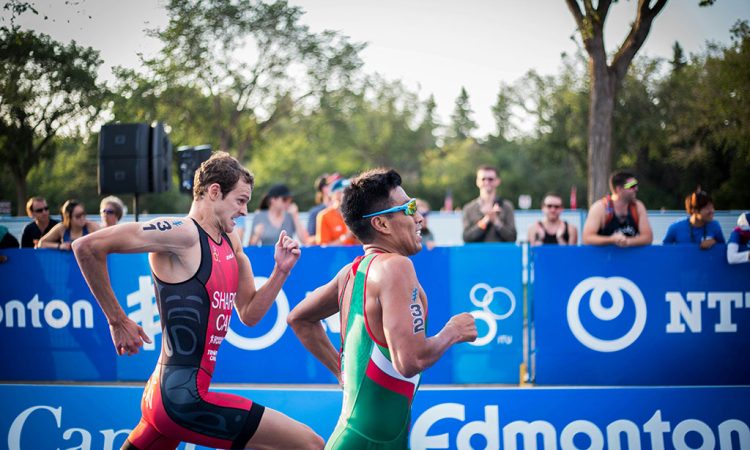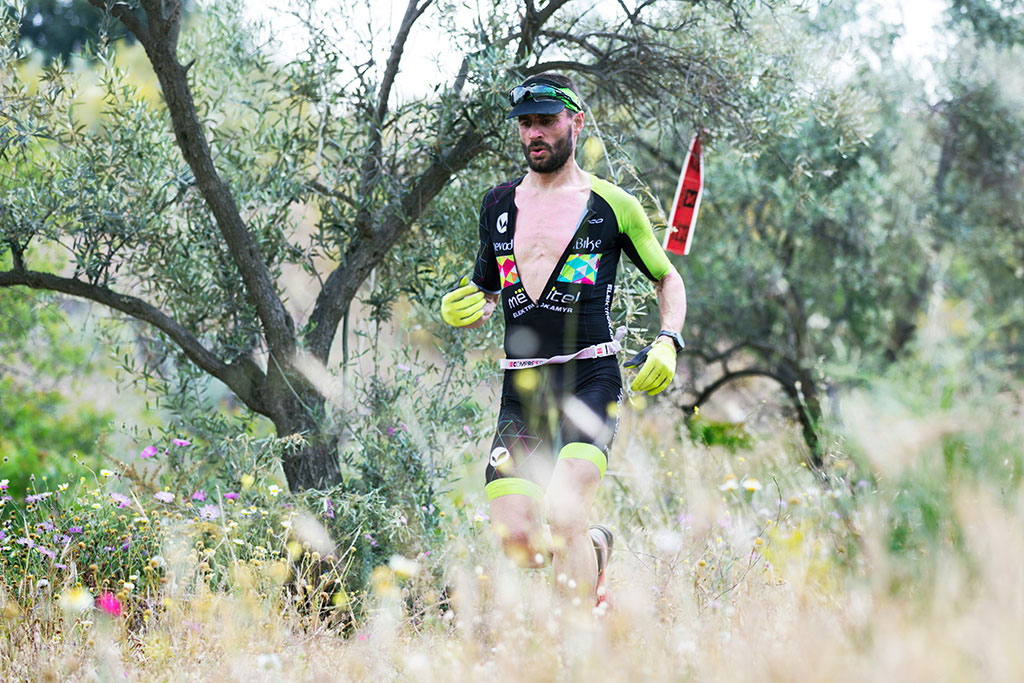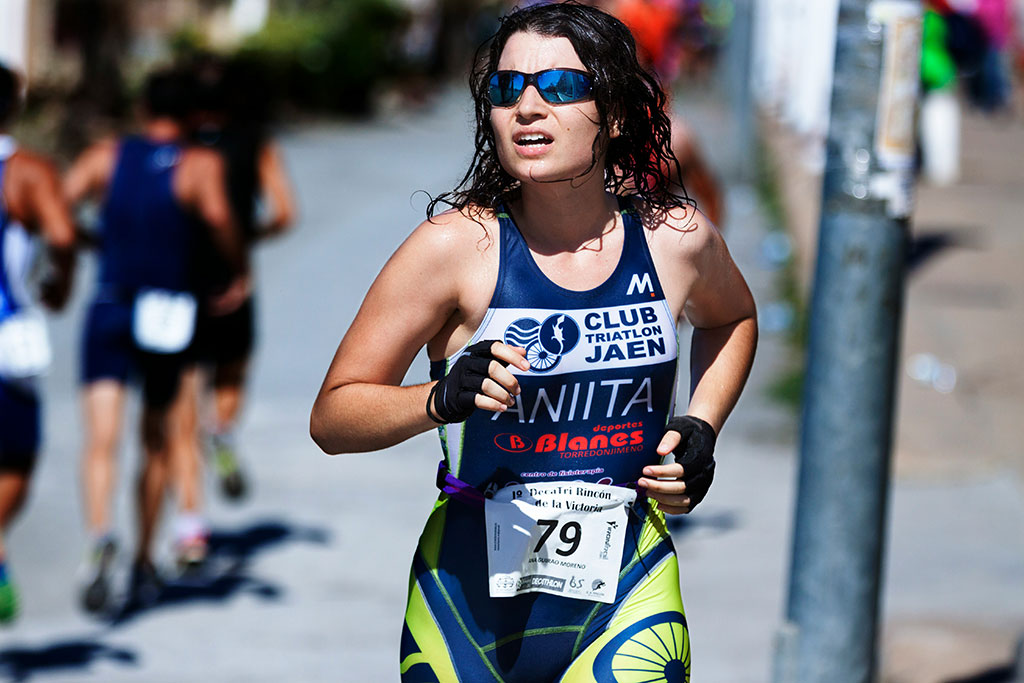
How to Prevent Triathlon Burnout: Expert Tips for Endurance Athletes
Burnout can derail your triathlon training and sap the love that you have for the sport. Learning how to prevent triathlon burnout by spotting early signs is key, as this then allows you to use effective recovery strategies, and manage stress, so you can stay fit and motivated.
Key Takeaways
- Recognising burnout symptoms early, such as chronic fatigue and loss of passion, is crucial for maintaining performance and enjoyment in triathlon training.
- Prioritising recovery through quality sleep, nutrition, and active recovery techniques is essential for preventing burnout and sustaining long-term success.
- Building a balanced training schedule and engaging a strong support system can help endurance athletes manage stress and stay motivated throughout their training journey.
Understanding Burnout in Triathlon Training
Burnout in triathlon refers to severe emotional and mental exhaustion that can significantly impact an athlete’s performance and overall well-being. These symptoms include emotional exhaustion, cynicism, and a reduced sense of personal accomplishment, which can occur separately from physical overtraining. Distinguishing between physical overtraining and burnout is important because it underscores that burnout affects both the mind and spirit, not just the body. Endurance athletes often face high training volumes and the pressure to perform, making them particularly susceptible to burnout.
Mental fatigue can be a silent killer in endurance sports. It creeps up on you, causing you to feel exhausted even when your physical capabilities are intact. This mental strain can lead to a loss of enjoyment in the sport, reduced performance levels, and a negative impact on overall health. Key factors contributing to burnout include a lack of work-life balance, performance pressure, and stress from high expectations. The fear of injuries or illnesses can also exacerbate burnout, adding to the emotional and mental toll on triathletes.
Burnout doesn’t discriminate; it can affect triathletes at all levels, from beginners to elite competitors. Thus, managing burnout effectively requires setting realistic goals, maintaining a healthy balance in life, and making recovery a key part of your training program. Recognising the signs and addressing them early can help you stay on track and enjoy the sport you love.
Recognising Warning Signs of Burnout
Endurance athletes need to recognise the warning signs of burnout. Chronic fatigue that persists despite normal rest is an early indicator for the endurance athlete. This persistent tired can leave you feeling overwhelmed and unable to perform at your best. Listening to your body and recognising that you are fatigued beyond usual post-training tiredness is important.
Frequent illnesses and injuries can also be red flags for burnout. When your body is constantly under stress, its resilience diminishes, making you more susceptible to getting sick or injured. Emotionally, you might notice increased irritability, mood swings, or a general sense of feeling overwhelmed by your training regimen. These emotional changes often felt precede full-blown burnout and should not be ignored.
Another critical sign is a loss of passion and enjoyment for the sport. If your workouts feel like a chore rather than an exciting challenge, it might be time to take a break and reassess. Behavioral changes such as withdrawal from social settings, changes in eating habits, and increased use of unhealthy substances are also common. Spotting these signs early helps address burnout before it severely affects your training and overall well-being.
The Role of Recovery in Preventing Burnout
Recovery goes beyond taking breaks; it’s a vital part of a sustainable training plan to prevent burnout. Triathletes should prioritise recovery by:
- Ensuring they get ample sleep
- Maintaining balanced nutrition
- Staying properly hydrated
- Including de-load periods in a structured training plan, which helps the body adapt by temporarily reducing training volume and intensity
This approach ensures that recovery is an intentional and integral part of your training program process, avoiding any mistake.
Let’s explore some specific recovery strategies that you can follow like the importance of quality sleep, effective nutrition and hydration, and active recovery techniques, along with other aspects that create a holistic approach to maintaining peak performance while avoiding burnout.
Prioritising Quality Sleep
Quality sleep is the cornerstone of recovery, playing a crucial role in muscle repair and overall health. Athletes should aim for 7-8 hours of sleep per night to rebuild muscle tissue and restore energy systems. Establishing a consistent bedtime routine free from screens will help to maximise sleep quality and ensure you wake up refreshed and ready to tackle your training goals.
Short power naps of 10-20 minutes can significantly refresh cognitive function and improve alertness without causing grogginess. These naps can be particularly beneficial on days with high training volumes or during intense periods of preparation for big goals. Consistency in sleep patterns is key to sustaining high performance and preventing burnout.
Nutrition and Hydration Strategies
An effective recovery strategy includes:
- Proper nutrition and hydration.
- Nutrition strategies tailored to individual athlete needs, as included in Tri-Revolution’s training regimens, optimising performance and recovery on race day.
- A balanced diet of complex carbohydrates, lean proteins, and healthy fats to fuel training and aid recovery.
- Proper meal timing, especially for athletes completing two training sessions per day, to ensure optimal nutrient absorption and continuous recovery.
Hydration is crucial for maintaining performance and preventing fatigue. Athletes should:
- Sip fluids regularly throughout the day.
- Ensure proper hydration before and during training sessions.
- In warmer conditions, replace electrolytes and salts lost through sweat to avoid dehydration and maintain peak performance.
Active Recovery Techniques
Engaging in low-intensity activities promotes circulation and reduces muscle stiffness. These activities, such as easy cycling or an easy run, can alleviate muscle soreness and speed up recovery after strenuous workouts.
Including active recovery in your training plan keeps your body active while allowing it to recover from high-intensity sessions. It’s a delicate balance of maintaining activity without overloading your muscles, which helps in sustaining a higher training volume over time.
Low-intensity workouts promote faster recovery and reduce the risk of injury and burnout.
Monitoring and Adjusting Training Intensity
Preventing overtraining and ensuring sustainable progress requires monitoring and adjusting training intensity. Using a seven-zone intensity scale can help athletes maintain appropriate training intensity for optimal performance. Different metrics provide valuable insights into training intensity and help in making necessary adjustments, including:
- Pace
- Heart rate
- Power
- Perceived effort
Retesting your lactate threshold regularly ensures that your training zones stay relevant to your current fitness level. This allows for precise adjustments in your training program, helping you maintain the right balance between intensity and recovery. Monitoring external factors like stress and sleep is also essential, as they can significantly impact your training intensity and overall performance.
Regularly reviewing performance data helps identify early signs of overtraining and make timely adjustments. Recognising smaller signs of fitness improvement, such as better recovery times and improved workout comfort, can also provide motivation and a sense of progress. Balancing training intensity with recovery helps you continue making progress without risking burnout, highlighting the difference in your overall performance.
Mental Recovery and Stress Management
Mental recovery holds equal importance to physical recovery in a training program. Mindfulness and guided imagery techniques enhance focus and reduce anxiety, aiding athletes in managing the mental demands of intensive training. Controlled breathing exercises, such as box breathing, promote relaxation and improve concentration. These practices can be incorporated into rest days or even during training sessions to manage stress and enhance performance.
Celebrating small training achievements helps to boost motivation and supports a sustainable approach to endurance sports. This practice fosters a positive mindset and helps manage mental fatigue, which can otherwise reduce focus, motivation, and performance quality. Training mental resilience through strategic stress drills prepares athletes for unpredictable competition conditions, reducing the risk of burnout.
Consistent sleep patterns significantly enhance mental recovery, help the body adapt to training stress, and improve overall health. Prioritising mental recovery alongside physical recovery helps athletes maintain a balanced training approach and achieve long-term success.
Building a Sustainable Training Schedule
Preventing burnout and maintaining consistent performance requires a sustainable training schedule. Including recovery weeks and rest days in your training plan significantly enhances performance and reduces fatigue. These recovery periods allow your body to adapt and repair, making you stronger and more resilient for future workouts. This is especially important during a week of intense training.
A balanced training schedule also involves varying the intensity and volume of your workouts to prevent overtraining at the gym. Carefully planning training sessions and incorporating recovery into your regimen helps achieve long-term success and enjoy the sport without the constant threat of burnout.
Engaging Your Support System
A strong support system significantly boosts motivation and mental health during intensive training. Key benefits include:
- Encouragement from friends and family alleviates mental fatigue associated with high training volumes.
- Sharing training goals with your support network enhances accountability and commitment.
- This support makes it easier to stay focused and motivated, providing valuable advice to help you gain momentum.
Group training sessions help to create a sense of camaraderie and reduce feelings of isolation. This collective effort makes the challenging journey of triathlon training more enjoyable and sustainable. Leveraging your support system helps develop the mental and emotional resilience needed to overcome the challenges of endurance sports during each train session.
Summary
Preventing burnout in triathlon training requires a comprehensive approach that includes recognising early warning signs, prioritising recovery, monitoring training intensity, and managing mental stress. By leveraging expert coaching and engaging your support system, you can build a sustainable training schedule that ensures long-term success and enjoyment in the sport. Stay committed, stay balanced, and keep the fire of your triathlon passion burning bright.
Here at Tri-Revolution, we provide a personalised coaching approach aligned with individual lifestyles and fitness levels, ensuring tailored preparation for various triathlon events. This approach helps those we work with to progress while avoiding burnout and fatigue. Key aspects of our approach include:
- Continuous support and feedback from coaches to help athletes maintain motivation and track progress effectively.
- Initial consultations involving discussions about athletes’ training backgrounds and goals.
- Creation of more effective training programs based on these consultations.
Performance assessments evaluate current fitness levels, helping coaches identify strengths and areas for improvement. The coaching team at Tri-Revolution consists of experienced professionals with a strong competitive background in racing, providing expert guidance across all triathlon disciplines and enhancing their ability to optimise performance in their job.
This comprehensive triathlon coaching approach ensures triathletes of all levels can achieve their goals while minimising the risk of burnout in triathlons.
Frequently Asked Questions
What are the early warning signs of burnout in triathlon training?
If you notice chronic fatigue, frequent illnesses, increased irritability, or a fading passion for triathlon, these are crucial early warning signs of burnout. Pay attention to these signals and take action to rejuvenate your spirit and energy!
How can sleep impact my recovery and performance?
Quality sleep is essential for maximising your recovery and performance, so aim for 7-8 hours nightly and incorporate short power naps to keep your energy levels high! Prioritise your rest, and watch your fitness soar!
What role does nutrition play in preventing burnout?
Nutrition plays a crucial role in preventing burnout by fueling your body and mind with the energy and nutrients needed for optimal performance. Embrace a balanced diet rich in complex carbohydrates, lean proteins, and healthy fats to support your recovery and keep your energy levels high!
How can I adjust my training intensity to prevent overtraining?
To prevent overtraining, regularly monitor your heart rate and perceived effort to find the right training intensity. By balancing your workouts with adequate recovery and analysing your performance data, you can achieve optimal results without burnout.
How can a support system help in my triathlon training?
Having a support system can significantly enhance your triathlon training by boosting your motivation and providing accountability. Surrounding yourself with other like-minded athletes helps to foster camaraderie, making the journey more enjoyable and less isolating.


